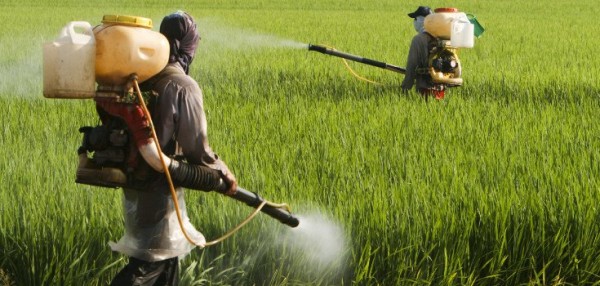Thiabendazole — toxicity, side effects, diseases and environmental impacts
11/16/2017 / By Rita Winters

Thiabendazole is a fungicide and parasiticide which is used to control diseases like mold, blight, rot, and stains on fruits caused by different types of fungi. As a registered treatment, thiabendazole is used to treat seeds prior to planting. These seeds include potatoes, sweet potatoes, soybean, wheat, and some mushrooms. It is also used after harvesting as a dip or spray on the following: citrus fruits, apples, bananas, pears, papaya, mangoes, plantain, avocados, carrots, peas, and potatoes. Additionally, thiabendazole is used as a preservative in various paints, carpets, adhesives, and some textiles. In some cases, thiabendazole is used included in antihelminthic veterinary drugs.
List of known side effects
Overexposure to thiabendazole can cause nausea, vomiting, headaches, weakness, drowsiness, and a lack of appetite. Inhalation of the toxic chemical can cause irritation in the respiratory tract. In large doses, thiabendazole is carcinogenic to humans. Some isolated cases associate overdoses with the following: vision impairment and psychic alterations; jaundice, cholestasis, and parenchymal liver damage; and many other complications.
Body systems affected by thiabendazole
Thiabendazole may result in the incomplete development of the bone marrow, wasting away of lymph tissue, and other abnormalities. Some individuals who received high doses of thiabendazole to treat helminthic infections exhibited severe digestive system reactions such as abdominal pain and vomiting. High doses can cause hepatobiliary toxicity in humans.
Items that can contain thiabendazole
Some food that may contain thiabendazole are: apples, mushrooms, tangerines, mangoes, pear juice concentrate or purees, apple sauce, grapefruits, bananas, apple juice, oranges, potatoes, papayas, cilantro, pear-based baby food, frozen potatoes, applesauce baby food, peaches, blueberries, broccoli, and butter.
How to avoid thiabendazole
To avoid being contaminated or affected by thiabendazole, make sure to use splash goggles when handling the toxic chemical. In laboratory settings, use a lab coat. Other cautionary items to use are dust respirators, and disposable gloves. In case a large spill occurs, use boots and a self-contained breathing apparatus to avoid inhalation of the product.
Where to learn more
- Lab analysis shows strawberries are contaminated with 20 different pesticides, majority of which cause cancer in humans
- Denmark discovers an alarmingly high concentration of pesticide poisoning in their population – school children are especially vulnerable
- Oranges and lemons are being treated with chemical fungicides and pesticides that cause cancer and thyroid problems
- Toxins.news
- Pesticides.news
Summary
Thiabendazole is highly toxic to humans at large doses. Isolated reports show that small doses can cause respiratory irritation. It is possibly carcinogenic to humans, but further studies must be done to identify its exact levels.
Sources include:
Tagged Under: thiabendazole




















